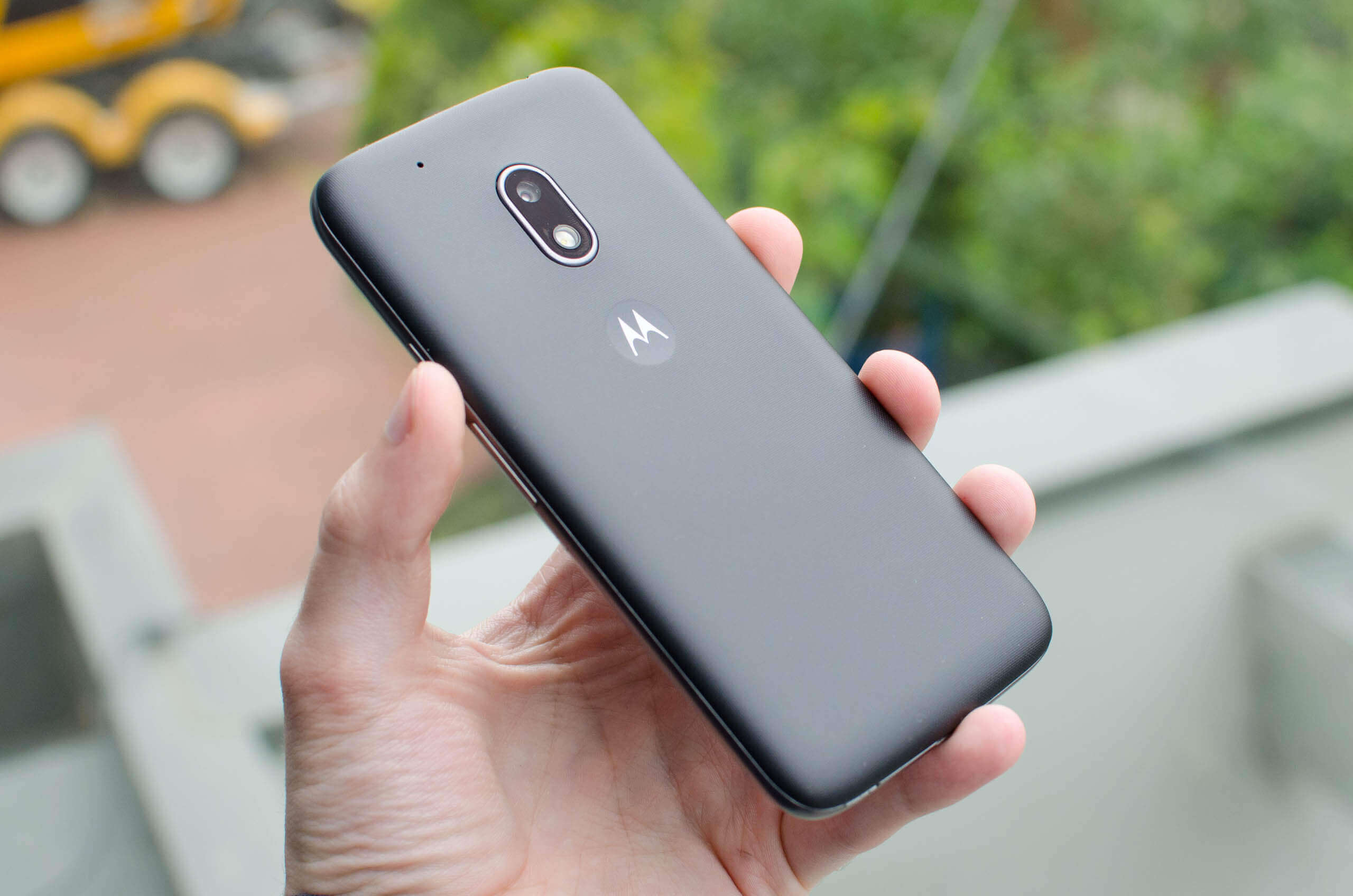Camera
The only area of the Moto G that has received a 'downgrade' relative to its predecessor is the camera. Previously we saw a 13-megapixel Sony IMX214 sensor, but the G4 Play instead opts for an 8-megapixel (3264 x 2488) OmniVision OV8865 1/3.2" CMOS sensor. With 1.4 µm pixels, the OV8865 brings an increase in light gathering ability at the expense of pure megapixel count, however the decrease from an f/2.0 to f/2.2 lens largely offsets this sensor-side improvement.
The front camera is a 5-megapixel sensor with an f/2.2 lens. Both cameras support 1080p video recording at 30 FPS, and the rear camera is paired with an LED flash. As this is an entry-level device, there are no fancy features like optical image stabilization or laser-assisted autofocus.
Despite the decrease in resolution and a move from Sony to OmniVision as a sensor vendor, the Moto G4 Play still provides a great camera at the price point. Motorola has focused heavily on improving image processing in their Moto G series, and unlike many other budget smartphone OEMs, they haven't simply used the default processing provided by the SoC and camera app.
The result is a camera that's in the same league as last year's Moto G. While it's not competing with the flagships of the current smartphone sphere, the Moto G4 Play's camera is excellent for the price, and tends to deliver surprisingly good photos in most conditions. Photos come off the G4 Play looking accurate, vibrant and quite impressive for a budget device.
The decrease in resolution from 13- to 8-megapixels does reduce the sharpness and 'zoomability' of images to a certain extent. With that said, the G4 Play's photos are filled with detail and don't appear to suffer significantly from post-processing filters for sharpening and noise reduction. No oil painting effect is a huge plus from any camera.
 |
 |
Dynamic range from this sensor is good, improved by a great auto-HDR mode that activates at the correct times, providing a large amount of extra dynamic range. Bokeh from the f/2.2 lens is okay, but not remarkable, though the actual quality of the lens is good, which helps produce a sharp image with few aberrations.
Colors are one of the G4 Play camera's strong suits. Especially in good lighting, images are saturated and well metered, which leads to accurate while balance and vibrant photos. If anything, greens are perhaps oversaturated, so photos with large amounts of grass or trees pop more than they should. I don't mind this from a smartphone camera though, as the aim should be to produce great photos without the need to edit them.
In worse lighting conditions the G4 Play does a reasonable job of producing good images, although the camera isn't as reliable in these conditions. Photos I took indoors had a slight yellow or pink tone at times, and the camera app can sometimes use a slow shutter speed that is prone to blur. However, despite this, most indoor shots produced by the G4 Play were surprisingly good and certainly miles ahead of other phones I've tested at this price point.
The G4 Play isn't particularly great in low light, although I wasn't expecting anything fantastic from an entry-level camera without optical image stabilization. Photos in these conditions tend to be dark, blurry and, at times, grainy.
While I was impressed with the G4 Play's image quality, the camera app continues to let the experience down. Motorola's software offering here is poor, lacks features, and fails to deliver an easy-to-use interface. Motorola needs to put more effort into their app so it matches the quality of their cameras.
 |
 |
The main issue with the app is nearly everything is hidden in confusing menus. Aside from a tutorial when you first open the app, there is no visual indicator that many of the camera's settings are hidden in a panel that slides out from the left side of the screen. It's also not immediately obvious that switching into the camera's two other shooting modes (video and panorama) are accessed by pressing a small camera icon above the shutter button.
On top of this, there are basically no features in the camera app. You can change the camera's resolution, but there are no options to change anything about the quality, and there is no manual mode. The selection of shooting modes is limited and unoriginal, and lacks some features that competitors provide, such as slow motion video. The tap-to-focus feature, which also spot meters, is janky and doesn't seem to work well.
Speaking of autofocus, the Moto G4 Play doesn't have a fast autofocus system, and it can take a bit of fine tuning to get the correct focus on an object, despite tapping on the screen several times. The shutter delay is acceptable for a smartphone camera, though don't expect excellent results while capturing fast-moving objects.





